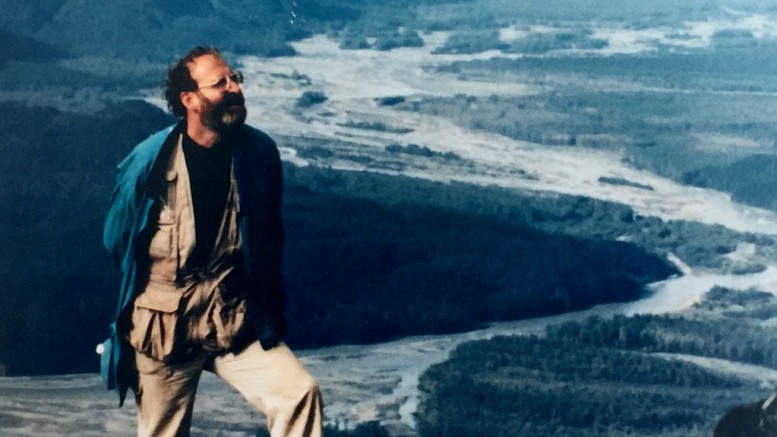VANCOUVER — When Delaware Resources’ Ron Netolitzky cracked open a rock high in the Skeena Mountains of northwestern B.C. in 1986, the sound of his hammer echoed through the valley.
What he had cracked into was the Snip gold deposit — a shear-hosted vein system incising the mountainside and loaded with enough high-grade gold to spark a frenzy on Howe Street and beyond.
The deposit — first noted by Cominco geologist Ted Muraro in 1964 — began production in 1991 under Homestake Canada, producing 1 million oz. gold at grades of 25 grams gold per tonne and a 12-gram-gold reserve cut-off, before low gold prices forced the operator to shut down the operation in 1999.
Thirty years later, Netolitzky — now chairman of Skeena Resources (TSXV: SKE; US-OTC: SKREF) and a recent inductee into the Canadian Mining Hall of Fame — has struck a deal that will blow the dust off one of B.C.’s more intriguing pieces of historical mining real estate.
“I’ve been chasing Snip for a lot of years,” Netolitzky tells The Northern Miner during a phone interview. “Any time you have a structure where people have mined a million ounces from a million tonnes, that’s a quality structure, and it’s certainly worth taking another look.”
For $2 million in exploration expenses over 30 months and 3.25 million shares issued, Skeena can earn 100% in the Snip property from Barrick Gold (TSX: ABX; NYSE: ABX), which inherited the asset by acquiring Homestake Mining in 2001. Barrick would retain a 1% net smelter return royalty on the property.
“Barrick was never part of the operation at Snip, and to my knowledge it didn’t meet anybody’s radar criteria in the company, so the project has just sat there since the mine closed,” Netolitzky says, noting the mine site was reclaimed before the major stepped in.
Under the deal, Barrick can claw back 51% of the property for three times the cost of Skeena’s exploration expenses if the junior finds in excess of 2 million oz. gold.
Walter Coles, Skeena’s president and CEO, comments during a phone interview that dealing with Barrick has been a “gratifying” experience, and he is pleased the major is now a shareholder.
“From Barrick’s perspective there’s exploration happening on a project that wouldn’t happen otherwise,” Coles says. “They give us a chance to go in and put cash into the ground, and if we win, then we both win together.”
Gold mineralization at Snip first quaked its way into the crust sometime between 175 million and 220 million years ago, bubbling up from large reservoirs of metal-rich porphyry systems below.
And Snip doesn’t sit in isolation. Other standout deposits in the region that formed during the same period include Seabridge Gold’s (TSX: SEA) KSM project, Barrick’s Eskay Creek mine, Teck Resources (TSX: TCK.B; NYSE: TCK) and Copper Fox Metals’ (TSXV: CUU) Shaft Creek project and Imperial Metals’ (TSX: III; US-OTC: IPMLF) producing Red Chris mine — to name a few — and discoveries are picking up speed as infrastructure in the region improves.
Pretium Resources’ (TSX: PVG; NYSE: PVG) Brucejack gold deposit was found by Silver Standard Resources in 2009 with a 1.5-metre discovery hole grading 16,948.5 grams gold per tonne. Proven and probable reserves for the project — which is scheduled for production in 2017 — now stand at 13.6 million tonnes of 15.7 grams gold for 6.9 million oz. gold.
Outside of Snip, Brucejack is the most significant porphyry-related vein system outlined in a region that is otherwise dominated by world-class gold-copper porphyries.
“One advantage of Snip is its reproducibility in grades. There’s no nugget effect,” Netolitzky says. “There’s visible gold but it’s quite finely disseminated, so you get a nice distribution.”
Over half of the mineralization at Snip was mined from the Twin zone — a high-grade blowout along an east- to southeast-striking shear zone, divided into two by a barren intrusive — whereas sub-parallel-trending structures below the main deposit accounted for the rest.
Netolitzky says the deposit runs oblique over 1 km from surface, but in true length it measures 300 to 400 metres along strike, extends 500 metres true-length to depth and is open east and down-plunge of the historical workings.
“If we can find another high-grade ore shoot like the Twin zone then, in this market, it would be wonderful,” he says. “This is really brownfields exploration … and from what I can see there’s likely a significant amount of material left behind. Operating guys don’t explore the same way as us explorationists. They might’ve thought they were being successful, but they don’t look too far outside their mining window for opportunities.”
Coles points out that the project’s previous operators had a high hurdle for what was considered economic.
“If we go back in history and look at what happened, the miners had no electricity or roads — it was a fly-in, fly-out, high-cost operation” he says, noting that concentrate was shipped from the site via hovercraft down the Iskut River.
“Now gold prices are four times higher than what they were, and there’s a two-year old hydroelectric plant with road access within 17 km from the property. So it wouldn’t take much to connect them.”
Coles says Skeena will spend the next two months pouring over old data and fine-tuning an exploration strategy to get the most out of the project’s initial $500,000 exploration budget for the year.
“We want to be thoughtful about this, and have a strong understanding of where the best opportunities are on the property,” he says. “We’re definitely eager to get in there.”
Skeena shares have traded within a 52-week range of 5¢ to 12¢, and closed at 8¢ at press time. The company has 325.4 million shares outstanding, for a $29.4-million market capitalization.


Be the first to comment on "Netolitzky returns to first big score at Snip with Skeena"